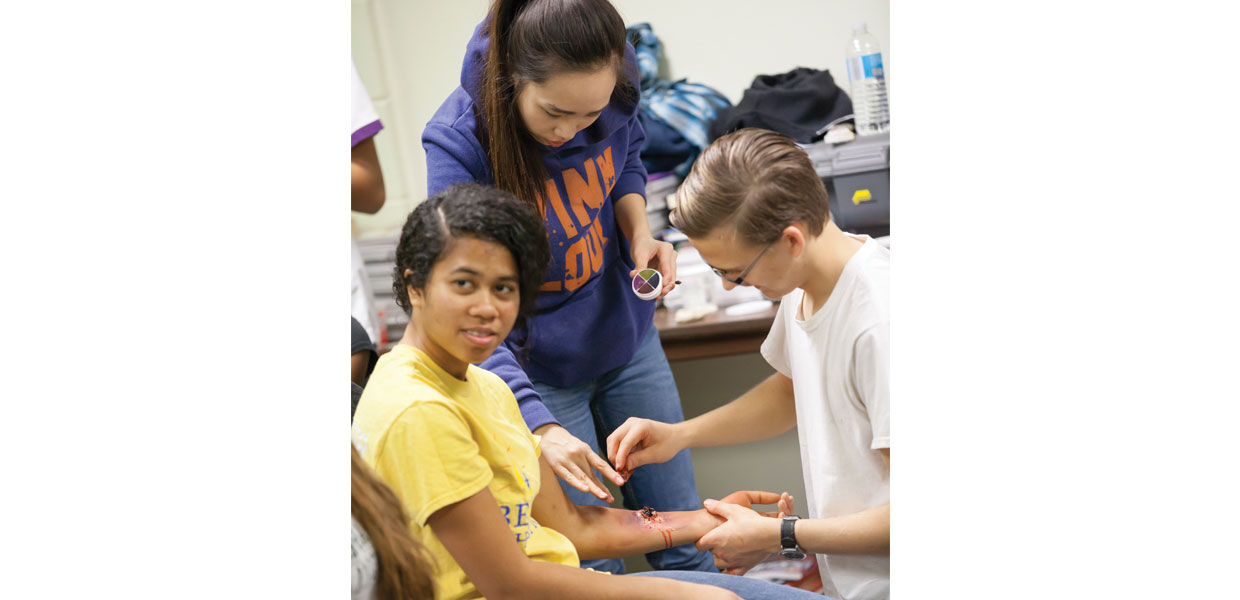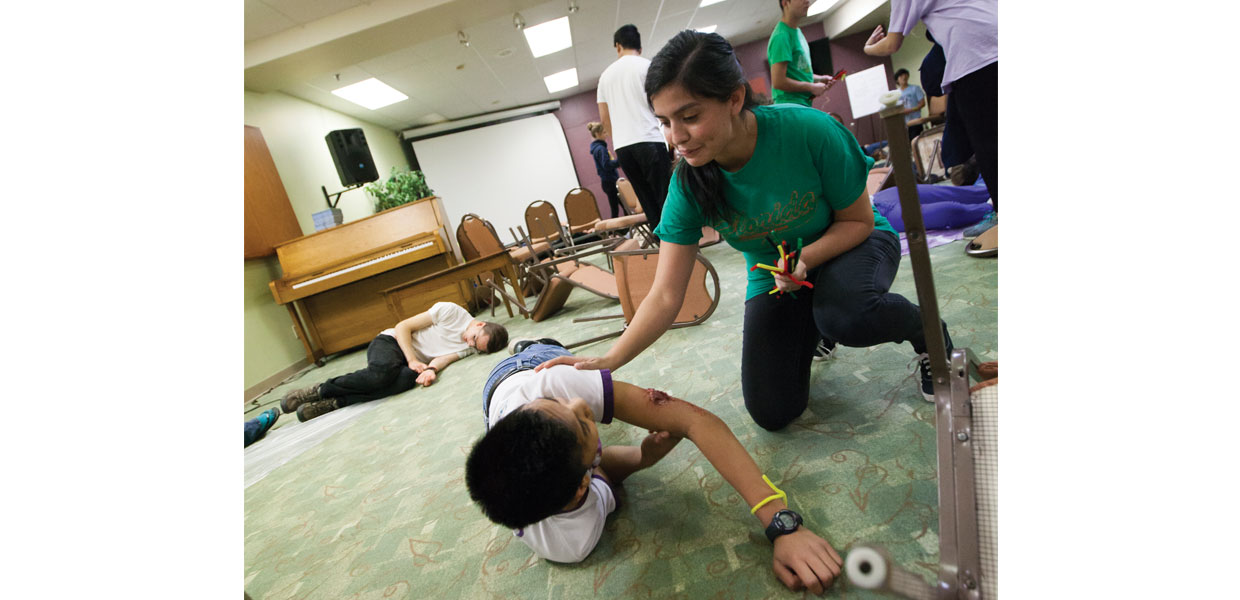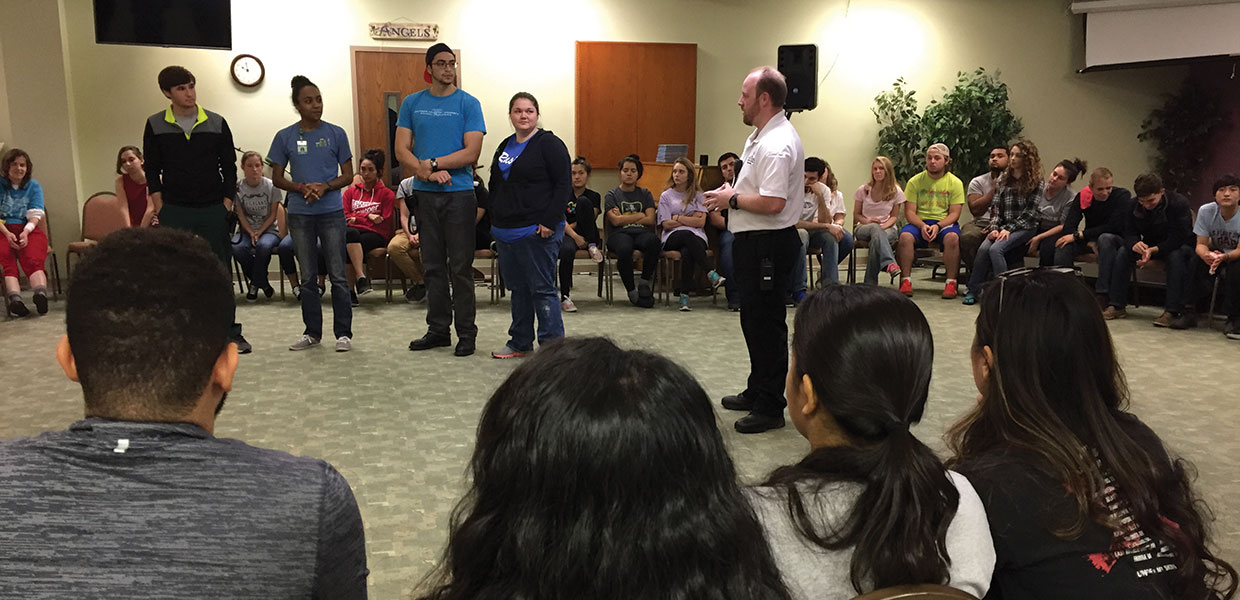
Ryan Pierce

Ryan Pierce

Janell Hullquist
By nature, disasters are usually unexpected, so in order to be prepared, one must train ahead of time. With the goal of helping nursing and education students be ready for worst-case scenarios in their careers, Southern Adventist University in Collegedale, Tenn., held a disaster simulation on December 8, 2016, in collaboration with Heritage Academy of Monterey, Tenn. Assistants and observers also came from the Hamilton County Health Department and Erlanger Health Systems.
During this interprofessional collaborative practice simulation, facilitated by the Schools of Nursing, Education and Psychology, and Religion, more than 60 Southern students participated in the drill. The scenario for the simulation involved a classroom shooting, with volunteer elementary education students serving as the “victims” while nursing students served as the “first responders.” A religion student acted as “chaplain” to offer emotional support.
“Southern’s mission is to provide our students with the best education possible,” said Ronda Christman, associate professor of nursing at Southern and coordinator of this event. “Offering evidence-based simulation experiences for our students will help equip them to think better on their feet, and have the critical thinking skills to identify, assess, respond, and provide care. Our goal is to prepare our students to help take care of God’s hurting children in a meaningful and professional manner.”
Jill Romero, senior nursing major, helped with “triage” during the simulation and was in charge of the immediate care zone, where critical “patients” were taken.
“This gave me an appreciation for the people who do this all the time,” she said. As a nurse, Romero does not anticipate being a first responder to a real disaster very often. However, she thinks this will still help her be more successful as a nurse. “If I end up working in an emergency room, this drill will have helped me understand the psychological impact and the mindset of victims when they arrive at the hospital.”
In order to increase the realism, elaborate makeup was applied to the “victims” in an art form known as moulage.
Josh Haley, Heritage Academy boys’ dean and graduate of Southern’s master of social work program, was in charge of the moulage and setting the scene for the “responders.” His high school students are experts in the art and have helped with similar simulations across the country, including at Harvard University in Cambridge, Mass., where they trained Harvard medical students and professors in the art, and in Orlando, Fla., where they helped prepare 600 “victims” for a training event.
“The purpose of moulage is to give the responders the preparation they’ll need to help in a real situation,” said Haley, whose master’s emphasis was disaster response. “In mass casualties, what do people do? If there’s a major emergency, who would help? The point is to train these students to be ready for similar situations.”
For one of the “victims,” the drill was eye-opening.
“I’ve never seen an actual wound,” said Audrey Lewis, freshman liberal arts education major, “so seeing the moulage gave me a glimpse of what to expect in a real situation. I feel like I have a better idea of what I would see and deal with if something like that happened.”
Following the simulation, the participants regrouped for a debriefing time, which allowed the professors and students to analyze and discuss how the drill played out and maximize the learning opportunities. Participants also filled out a survey in which 79 percent said they feel better prepared to assist following a classroom disaster.
Several community members were invited to observe the event and give feedback on the process. Brad Bost, Medical Reserve Corps coordinator in emergency preparedness for the Hamilton County Health Department, was one of these observers.
“It is an excellent experience for university students to do disaster simulation training like this,” said Bost, who has more than 15 years of experience in emergency preparedness. “If something happens in the community, these students will be better prepared to help, which would be phenomenal.”
Southern plans to continue conducting these collaborative emergency preparedness simulations every semester.
Southern Adventist University | February 2017



Comments are closed.